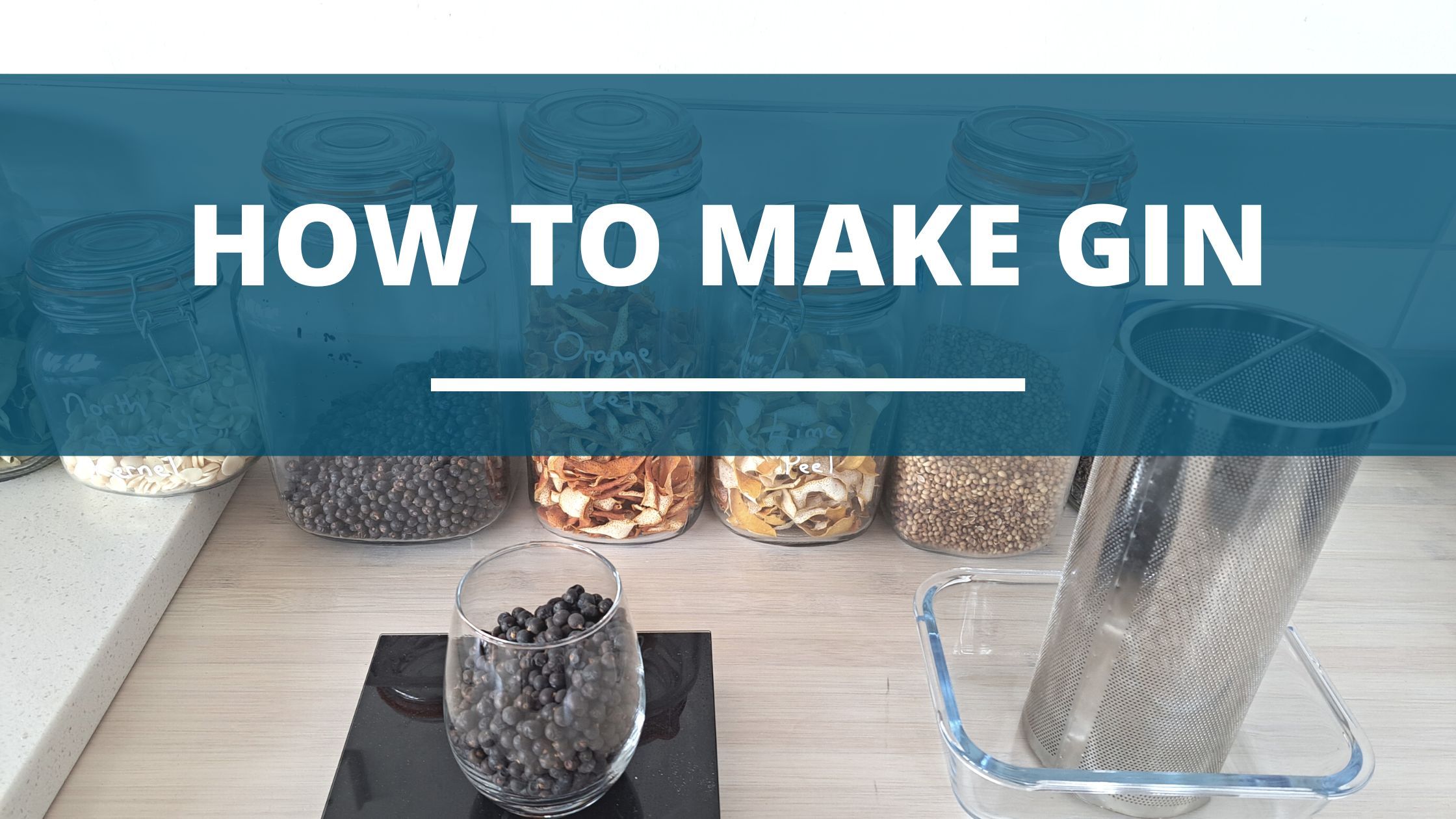Making gin is easy and fun. You have a myriad of botanicals and techniques at your disposal to whip a spirit of your liking, and you’ll always have a bottle ready to serve your guests when entertaining.
To make gin, you’ll need a neutral spirit (vodka), botanicals, and a pot still. You can either macerate the botanicals by letting them steep in the spirit overnight and re-distill the next day or re-distill them by vapor infusion. Vapor infusion involves adding botanicals to a gin basket and allowing the vapors to extract the flavors. Once distilled, you water the gin down to 40% ABV (80 proof), bottle it, and store it or drink it right away!
But what if you don’t have a still? We’ve got you covered! You can also explore infused or compound gin methods which only require a couple of glass jars, vodka, and store-bought botanicals. Both these techniques rely on infusing the botanicals in the spirit, filtering, bottling, and storing.
So, are you ready to make gin? Let’s go!
Table of Contents
How To Make Gin: An Overview
To make gin, you’ll need a neutral spirit (vodka), botanicals, and a pot still. You combine the ingredients, re-distill the spirit and you end up with gin. After redistilling, add water to dilute the spirit to 40% ABV (80 proof), bottle and drink.
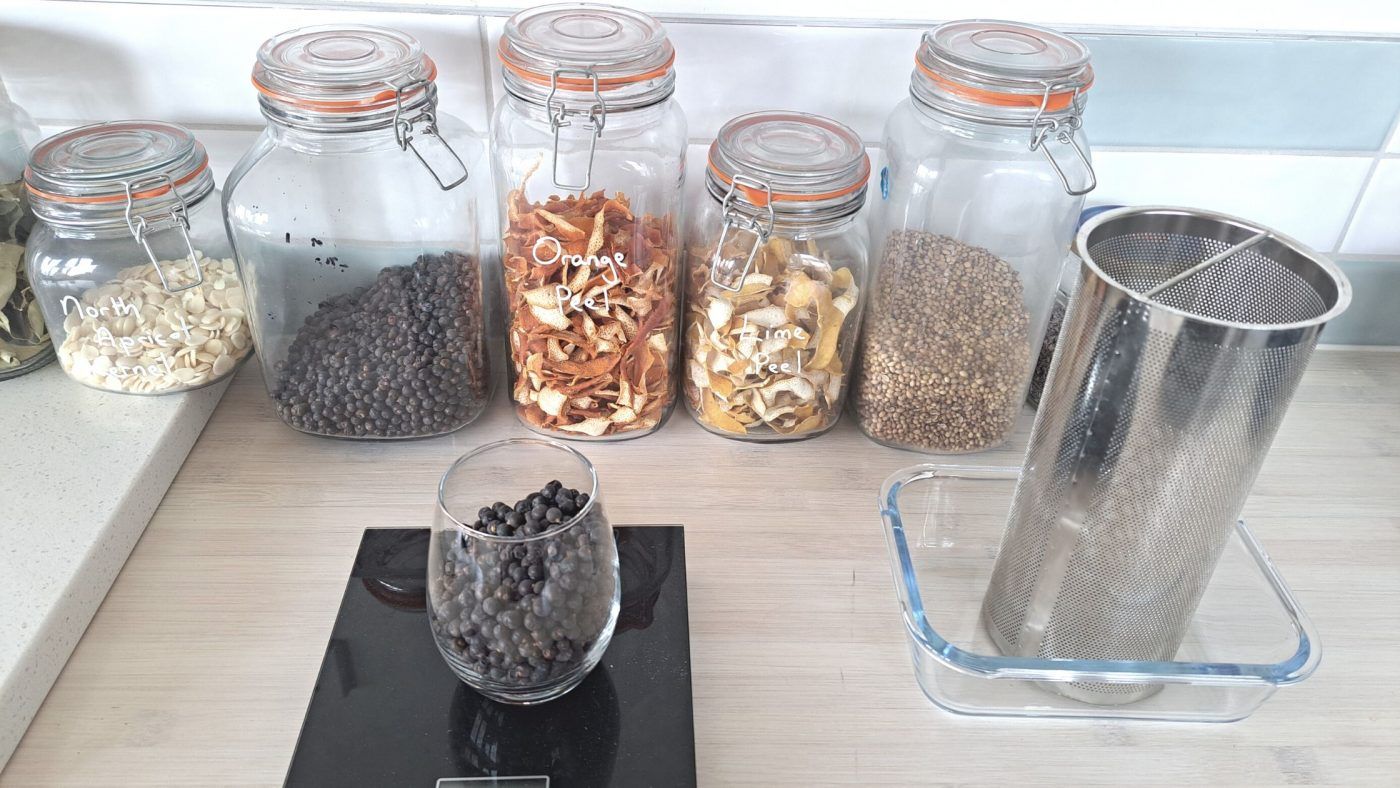
A Quick History of Gin
Gin originated in Holland in the 17th century, where it was called Genever – meaning juniper in Dutch. The spirit was made from distilling malt wine with an ABV of 50% (100 proof). It tasted vile, so the Dutch decided to add juniper berries to mask the unpleasant taste.
Read more: This article talks about what is Genever and the difference between genever and gin.
The spirit was originally used for medicinal purposes and doctors would often prescribe it for conditions like kidney problems and gallstones. It was introduced to England by a man named William of Orange around the 1800’s and the English decided to call it gin.
London embraced the drink and consumed it as a social drink. At that time, gin was a lot cheaper than beer, and most people in the lower class devoured the drink daily, which gave rise to the gin craze. This era of overindulgence lasted for about 50 years.
When the government realized the extent to which the citizens were abusing the drink, they decided to place a hefty tax on the spirit and placed regulations around alcohol.
The infliction of these laws caused a riot, and a group of gin enthusiasts decided they’d serve gin lovers the drink down some alley. And Old Tom was born. It’s believed there was a slot with a black cat sign, indicating that’s where it was sold. People would insert a coin in a little hole, and out came a shot of gin.
What Is Gin Made Out Of?
Gin is made from a neutral grain spirit (high-proof vodka). The spirit is flavored with juniper berries and other botanicals. Neutral spirit is exactly that – odorless and flavorless, which is why it’s preferred for gin-making. Here’s an explanation of the main ingredients used to make gin.
Starting with Vodka
Because gin is a neutral spirit with added botanicals, using it as a base spirit is often a cost-effective alternative. Most gin makers prefer it because it has no odor or flavor and saves time by eliminating the need to ferment and distill multiple batches.
Neutral spirit has a high ABV (up to 96%) and it’s watered down to at least 40% after being flavored with botanicals and re-distilled.
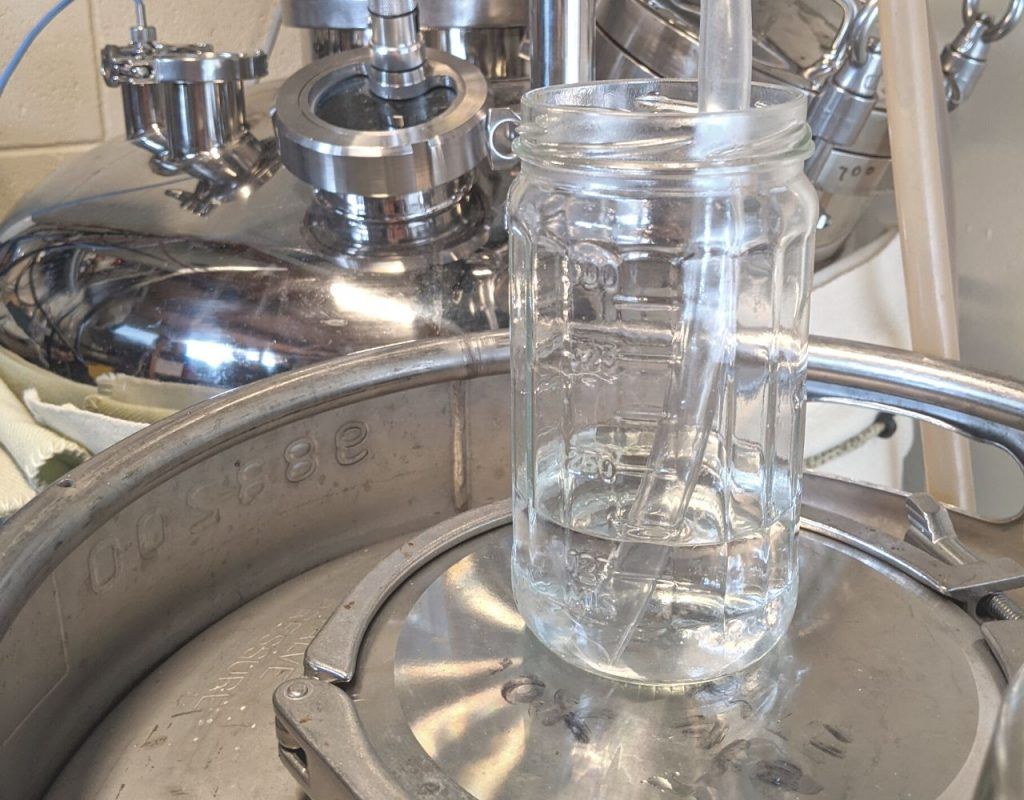
Why Juniper? Behind Gin’s Taste
The predominant botanical used in gin is juniper. In fact, according to the Alcohol and Tobacco Tax and Trade Bureau, for gin to be called gin it has to have juniper berries. How much juniper is used is up to the master distiller.
These berry-like seeds are preferred because they contain terpenes – chemical compounds that give gin its distinct flavor and aroma. These include molecules like alpha-pinene, sabinene, limonene, borneol, and farnesene. All these compounds combined bring about the woody, citrusy, earthy, floral, and piney aromas that gin is known for.
Once the distiller has established the amount of juniper, he adds some other botanicals.
Gin Botanicals
In addition to juniper, other herbs, spices, and fruit are added. They include coriander, citrus fruit, cassia bark, orris root, and angelica root. These botanicals are carefully selected because they complement the juniper notes. Once the botanicals are added, the gin is re-distilled, and the resulting product is a tasty and complex spirit.
Read more: We wrote this article as a complete guide to gin botanicals.
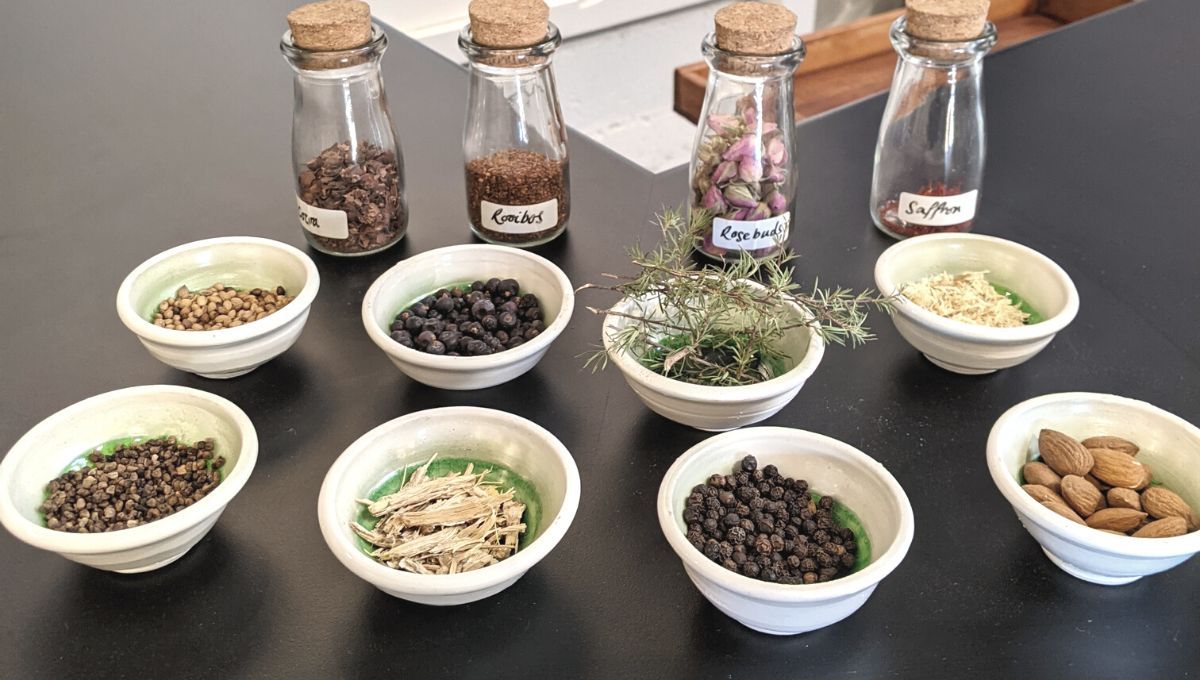
Recipe 1: How To Make Distilled Gin – Maceration Method
Maceration is a process of infusing the botanicals in a neutral spirit and allowing the alcohol to draw out the flavors overnight. Then the mixture is watered down to 40% ABV, added to the boiler, and redistilled.
Maceration tends to extract the flavors more efficiently and completely, since they spend more time in the alcohol. However, it’s also known to ‘over cook’ some botanicals since the are being boiled for hours before being collected.
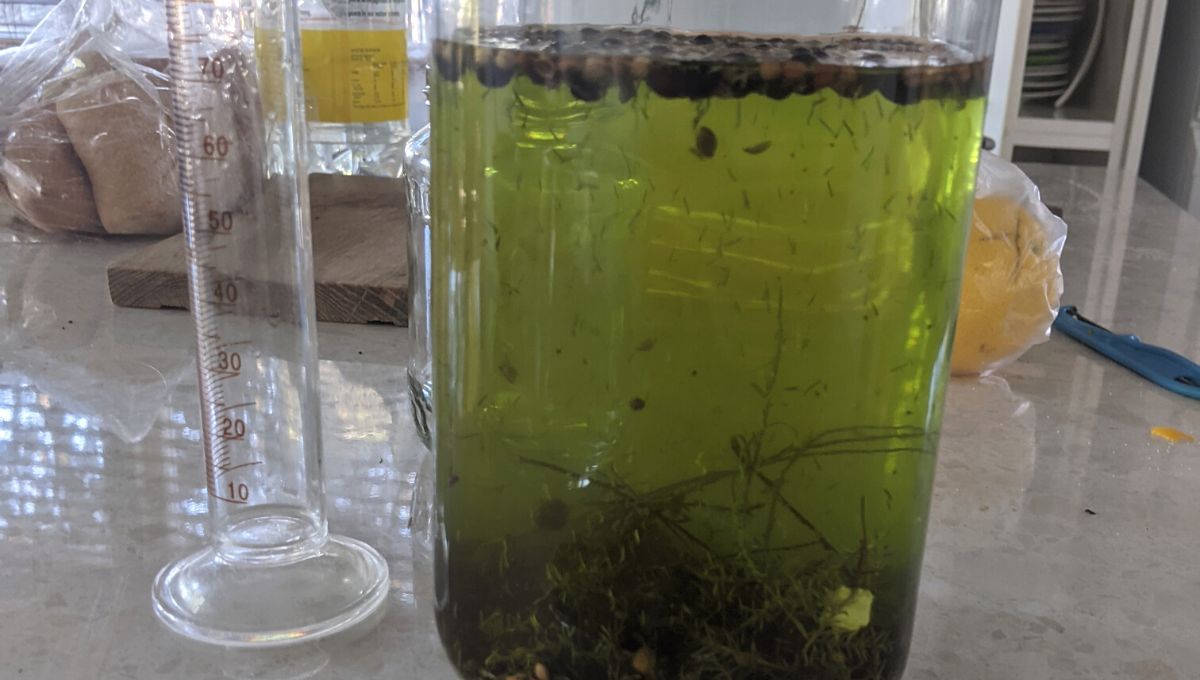
Step 1: What You Need
- 20 liters neutral spirit
- 360-400g juniper berries
- 90g coriander seeds, crushed
- 40-50g angelica root
- 40g cassia or cinnamon sticks
- 40g licorice root
- Glass Jars
Step 2: Macerating the botanicals
- Pour the neutral spirit into your boiler.
- Add the botanicals.
- Let the mixture steep for 24 hours.
Step 3: Running the still
- Turn on your heat source and let you still run.
- Collect the distillate into glass jars.
Step 4: Blending & Bottling
- Dilute the spirit with water to 40% ABV.
- Transfer it into bottling jars.
Recipe 2: How To Make Distilled Gin – Vapor Infusion Method
During vapor infusion, the botanicals are added to a gin basket hung on the still’s neck. The vapors from the boiler interact with the botanicals and carry the flavors through the condenser into collecting jars. The method used depends on the flavor profile the distiller is trying to achieve. Here’s how to make vapor-infused gin.
Vapor infusion is regarded as less efficient that maceration, so you’ll need more botanicals to get the same level of taste. It’s also a lot more delicate in the way flavors are extracted, and seems to keep elements like citrus and floral botanicals tasting ‘fresher’.
Some distillers use a hybrid method where some ingredients are placed in the boiler (maceration) and others are vapour infused.

Step 1: What You Need
- 20 liters neutral spirit
- 360-400g juniper berries, lightly crushed
- 90g coriander seeds, crushed
- 40-50g angelica root
- 40g cassia or cinnamon sticks
- 40g licorice root
- Glass Jars
- Gin Basket
Step 2: Setting up the still
- Add the botanicals to the basket.
- Place the gin basket on the neck of the still.
Step 3: Running the still
- Turn on your heat source and let you still run.
- Collect the first 100ml of the distillate and set it aside. These are the foreshots.
- Collect the rest of the distillate into glass jars.
- Let the still cool completely.
Step 4: Cutting & Bottling
- Dilute the spirit to 40% ABV.
- Transfer it into bottling jars and store it.
Recipe 3: How To Make Distilled Gin – Compound Gin Method
Compound gin is the idea of distilling each botanical separately and blending the various distillates to create your final gin to taste.
This has the advantage of giving you, the distiller complete control of the taste of your product, as you can easily add a little bit more of this or that to hone your taste. The draw back with this method is many distillers perceive that the flavors don’t marry together as well – i.e. you can taste that they weren’t distilled together.
It’s also possible to make a gin with the maceration or vapor method, and then add one or two ‘finishing botanicals’ at the end with the compound method.
Here’s how to make compound gin.
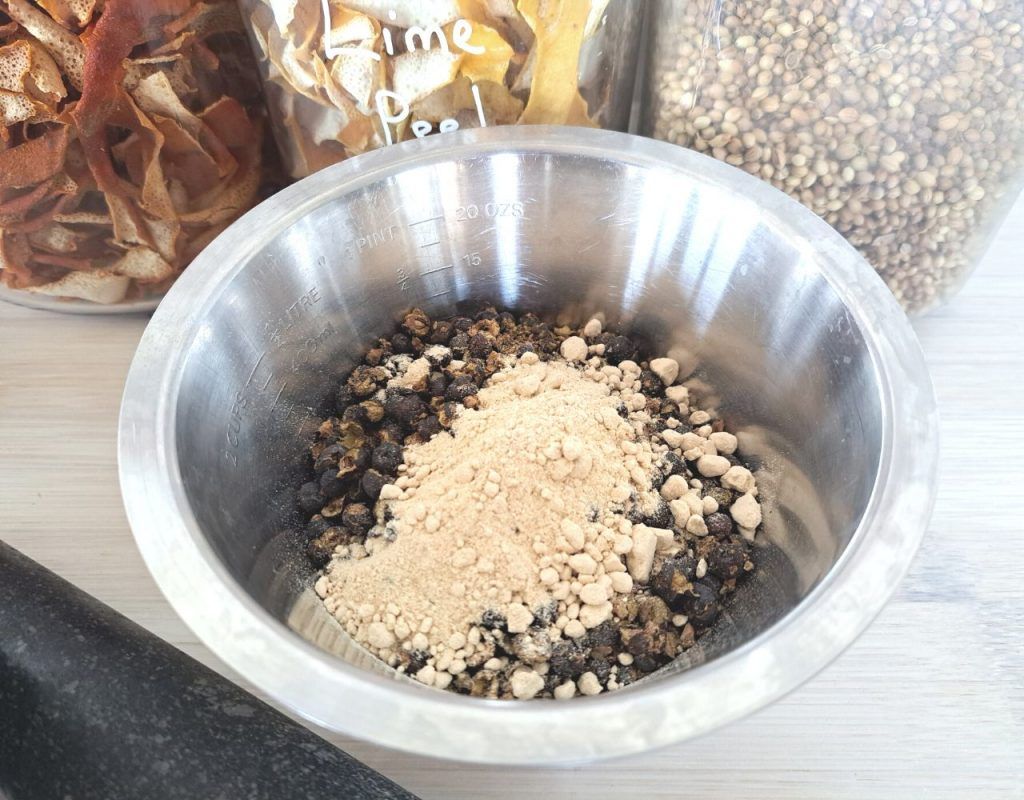
Step 1: What You Need
- 1 750ml 80-90% ABV (160-180 proof) vodka – preferably Everclear
- 20 grams of juniper berries
- 2 Tbsps whole coriander, crushed
- 1 tsp rosemary
- 1 ½ tsp dried orange peel
- 1 ½ tsp dried lemon peel
- 1 cinnamon stick
- 1 cardamom pod, crushed
- Pitcher
- Filter
- Large glass jar
- Cheesecloth
Step 2: Preparing Botanicals
- Using a mortar and pestle, crush the coriander and cardamom.
- Pour the ingredients into a glass jar, and pour the vodka into it.
- Place the jar in a dark place at room temperature for one week. Shake the bottle once a day.
- Using a cheesecloth, strain the mixture through the cheesecloth into a clean jar.
- Place the filter on the pitcher.
- Pour the liquid through the filter. Repeat the filtration process until you have a clear spirit.
Step 4: Blending
- Dilute the liquor to 40% ABV.
Step 5: Cutting & Bottling
- Bottle and store the gin.
Variations:
Here are some herbs and spices you can add to personalize your gin.
- Basil
- Lavender
- Whole nutmeg
- Star anise
- Cilantro
- Mint
- Whole cloves
Recipe 4: How To Make Gin Without Distilling – Infused Gin (Easy)
Gin infusion is a super simple way to enjoy gin. When infusing, you’ll have to wait 7 days for the liquor to absorb the botanicals, or you’ll wind up with a dull gin. Here’s how to make a gin infusion.

What you’ll need:
- 1-liter vodka
- 1 Orange
- 1 Lemon
- 1 ½ teaspoon juniper berries
- 1 sprig rosemary
- 1-2 cardamom pods
- 1-2 tsp coriander
Step 2: Infusing The Botanicals
- Wash your orange and lemon with warm water to remove any wax. Peel the fruit without getting to the albedo (white part under the skin).
- Pour out a shot of vodka to make room for the botanicals.
- Using a funnel, add the herbs and spices. Put in the peels.
- Close the bottle and shake well.
- Let it sit for a week.
Step 3: Bottling
- Check the progress of your gin by taking a sip of your drink. If the taste is to your liking, then you can strain the liquor into bottles using a cheesecloth.
Variations:
You can play around with other herbs and fruit to make a warm fall or lively summer gin. The only limitation is your imagination. A few other ingredients you can add are:
- Angelica root
- Licorice
- Cinnamon
- Lavender
- Mint
- Fennel
- Cucumber
- Strawberries
- Grains of paradise.
Is It Legal to Make Gin at Home?
One thing about making your own spirits is you have to be aware of the legal implications. Here’s what you need to know about distilling gin at home.
Current Regulations
According to federal regulations, it’s illegal to make gin at home unless you have a license. These regulations vary depending on where you are, so it’s best to check in with your state’s laws. Some of the requirements for making gin include:
- Paying taxes.
- Acquiring the necessary paperwork.
- Filing claims.
- Using suitable equipment to produce the spirit
- Maintaining records of your operations.
Legal Definition of Gin
The Alcohol and Tobacco Tax and Trade Bureau (TTB) defines gin as “a spirit with a main characteristic flavor derived from juniper berries produced by distillation or mixing of spirits with juniper berries and other aromatics or extracts derived from these materials and bottled at not less than 40% alcohol by volume (80 proof).”
Different Types of Traditional Gin
Gin has a rich history. But in all this, the traditional one is still enjoyed as a social drink. Here are some of the conventional gins.
1. London Dry
London gin is a popular alcohol found in most retailers and bars. The spirit doesn’t have to be made in London to be called London Dry, it just has to follow the style of this classic spirit. London dry gin has to be between 38-45% ABV. Also, it has to be dry, loaded with juniper, and have a light body. The product shouldn’t contain artificial flavors, and nothing has to be added to the spirit after distillation except for water to proof it down to 40% ABV.
2. Plymouth
Plymouth is well known for its earthy and bitter taste. This is because it has more roots than it does juniper. Its style closely resembles that of a London Dry Gin.
3. Old Tom
Old Tom is a sweeter version of London Dry. It was inspired by the need to pacify the harsh taste of the main alcohol – genever. It derives its sweetness from sugar and sweet botanicals.
4. Contemporary Gin
An interesting way of looking at contemporary gin is that distillers were having fun with their gin. It’s not juniper forward. Rather, it’s bursting with floral and citrus notes. A popular brand of this spirit is Aviation gin.
Popular Gin Drinks
1. The Gin Martini
Gin Martini is a classic cocktail dating back to the 1900s. There are two versions of the martini: dry and gin. A dry martini is made from London Dry gin, dry vermouth, and orange bitters, while a gin martini is a combination of Old Tom, French vermouth, and absinthe.
2. The Negroni
Negroni is an Italian drink inspired by the Americano cocktail. It’s made from Campari, sweet vermouth, and orange peel for garnish.
3. The Tom Collins
This classic drink is named after a joke that was doing the rounds in New York around 1874. It’s a sour cocktail made with gin, lemon juice, sugar, and carbonated water. It’s often served in a tall glass with up to 14 ounces per serving.
4. The French 75
A classic cocktail dating from the 1920s, French 75 is great if you love zesty, bubbly drinks. It’s also one of the most potent gin-based cocktails. It’s made from gin, absinthe, champagne, syrup, and lemon juice.
Frequently Asked Questions
Q. What is the main ingredient of gin?
Juniper berries are the main ingredient used in gin. The botanical contains terpenes – chemical compounds that give gin its distinct flavor and aroma. All these compounds combined bring about the woody, citrusy, earthy, floral, and piney aromas found in gin. Once the distiller has established the amount of juniper, he adds some other botanicals like coriander, cardamom, angelica root, and cinnamon.
Q. Is gin made from vodka?
Gin is made from a neutral grain spirit (high spirit vodka). The spirit’s flavored with juniper berries and other botanicals. Neutral spirit is exactly that – odorless and flavorless, that’s why it’s preferred for gin-making.
Conclusion
When it comes to making gin, there are various techniques you can employ. You can re-distill the neutral spirit (vodka) once you’ve added your botanicals or infuse the botanicals and skip the distillation part altogether. The best thing about all these methods is that you can let your creativity come alive as you experiment with flavors and aromas your palette will be fond of.
Though juniper is the dominant ingredient, contemporary gin has proven that you can dial up or dial down on the amount you use while maintaining the essence of the drink. Now that you have some recipes you can try out, perhaps it’s time to impress your family and friends with your gin-making skills.

